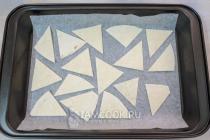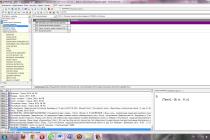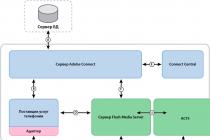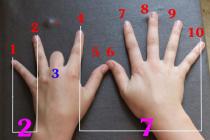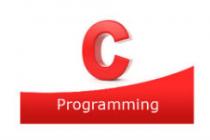Do-it-yourself computer assembly- each of us at least once faced a situation when, trusting a sales assistant, he chose a ready-made Personal Computer... But after a few months I realized that for the same money I could get a much more productive version. So that such a story does not happen to any of our readers in the future, we have prepared instructions on how to assemble a computer yourself.
This process in fact turns out to be much simpler than many users who are far from technology assume, but still has a number of nuances, which we want to dwell on in detail in our material. And we will start with a brief reminder of what a computer consists of and how not to be mistaken in the choice of components.
System unit - how to choose accessories?
When a customer walks into a computer store and sees the breadth of choice of motherboards, processors, video cards and other components, it seems to him that to connect all these devices together, you need to have at least a doctorate in technical sciences. But not everything is so bad, the manufacturers of computer hardware took care of us and many years ago adopted a single standard - Advanced Technology Extended, which unifies the entire hardware of a computer. Therefore, we are now free.
The choice of components is the most difficult task when assembling a PC, much more laborious than connecting them together, but this material is devoted to just the last problem, and you can find a comparison of the characteristics of video cards and processors in our other publications.
The basis of our entire future system is the motherboard, as its name implies. It practically does not affect performance, but it is responsible for the proper operation of all components of our computer.
The whole process of assembling a PC essentially consists in connecting components using connectors and wires to the board, and therefore it is worthwhile to first evaluate what kind of computer you would like to have at the output and based on this choose motherboard with one or another number of cells for RAM, a socket suitable for the desired processor, and so on.
Same way important characteristic a motherboard is a form factor - it determines what dimensions you need a case, so be careful right away and when purchasing a large E-ATX motherboard do not expect to fit it into a compact case. The main thing is not to worry and do-it-yourself computer assembly- everything should work out.
Installing the processor, RAM and cooling system.
To assemble a computer at home, we suggest starting by working on an “open stand”, rather than immediately installing your components in the case, not knowing if the system is working or not. The process is as follows: we connect all our parts to the motherboard, update the board firmware, install operating system and test the resulting assembly for errors and conflicts. If they are not identified, then we are happy to install all this in the case.
Let's start the process by installing the heart of our future PC - the processor. It should be remembered that two market leaders in the production of processors - AMD and Intel, fundamentally use different socket designs, the former have contact pins on the processor, while the latter prefer to place them in the socket.
For installation AMD processor it is necessary to raise the metal lever, insert the legs into the holes provided for them, and then return the lever to starting position... Thus, we will close the contacts of the processor with the contacts of the socket and reliably fix this position.
When installing Intel, lift the lever and hold-down cover, and after installing the processor, follow these steps in reverse order. Both the one and the other type of processors should be installed in a strictly defined position, which is shown by arrows on the processor itself and on the motherboard socket.
As for cooling the processor, you need to remember that they are all installed in different ways and the only reasonable action would be to strictly follow the instructions. For example, AMD has a passion for fasteners with plastic lugs, and Intel basically doesn't use such a design solution. In general, most processor coolers are quite universal, and therefore can work with chipsets from both companies, but be careful when choosing - there are also models that are loyal to only one brand.
Do not forget that many coolers can be installed in two positions, which determines through which wall the heated air will come out - back or top. Therefore, before installing, weigh the potency of both options and your case and choose the most productive one.
After we secured the heatsink and installed a fan on it, all that remains is to connect the power connector to the corresponding connector on the board called CPU_FAN. More expensive motherboards can provide two similar connectors for two coolers at once.
So, to complete the initial work, we just need to install the RAM modules in the DIMM slots. Each bracket has a security key that makes it impossible for you to insert it in the wrong direction, and you will also not be able to insert memory of the same type, for example, DDR3, into a socket on the motherboard that is not provided for it. Thus, installing RAM is the simplest process in the algorithm for assembling a personal computer.
Most processors have a dual-channel set of RAM, and therefore it is recommended to insert an even number of strips. It must be remembered that a sufficiently large processor cooler can overlap the RAM slots on some motherboards, and therefore it is worthwhile to thoroughly study their compatibility before purchasing.
Applying thermal paste to the processor
Many beginners make a common mistake and think that assembly is solely about assembling parts a la constructor. Thermal grease is no less important for the performance of the processor than itself and the cooling system, which helps their tandem to demonstrate maximum performance. As a rule, a small layer has already been applied to the fan sole, so this does not have to be done during the first assembly.
However, if it is absent, just add a couple of drops of the composition and spread them evenly over the area of the CPU heat-distribution cover. Excess, on the contrary, will reduce the thermal conductivity between the processor and the cooler, which will negatively affect the performance of the computer. If you already decided to assemble a computer with your own hands, then at least do not harm it.
Installing the motherboard into the case
The main line when choosing a case for you should be the one that is responsible for the supported form factors of motherboards. The following are the maximum possible sizes of the installed components - believe me, when it comes time to wire the wires, you will say thank you to yourself for choosing the most comfortable case in which you can install all the desired hardware without unnecessary manipulations.
To install the motherboard, you first need to screw the fastening nuts with external and internal threads. As a rule, all bolts and nuts are included with the body, they are standardized, so you hardly need to look for something unique to install your assembly. By fixing the plugs and screwing the nuts, you can move on.
Connecting Chassis Controls to the Motherboard
The panel of a standard case is usually equipped with on / off buttons, as well as USB ports and a headphone jack. As a rule, these interfaces are located at the bottom of the motherboard, and therefore we find them and connect them to the case.
The set of wires is quite standard:
- PWR_SW is responsible for the on / off button;
- RESET_SW activates the reset key;
- HDD_LED ("plus" and "minus") activates the drive activity indicator;
- PWR_LED ("plus" and "minus") is responsible for the operation of the computer status indicator.
Installing the power supply
It's time to install the power supply and connect the cables to the motherboard. All connectors have keys that prevent incorrect connection, so an inexperienced user can handle it. Each connector speaks for itself, and if it says SATA, then it is probably intended for a device with the same interface.
V recent times The power supply compartment is located at the bottom of the case for better ventilation, so make sure that the length of the wires is sufficient for the components located in the part of the video card remote from the block. After installing the unit, we stretch two main cables - 24-pin to the motherboard itself and 8-pin to the processor. When purchasing a PSU, we advise you to immediately purchase a bundle of nylon ties so that your bundle does not get confused between the PC parts.
Installing drives
There are several drive form factors: 2.5 ", 3.5", and M2 SSDs. The latter are installed on the motherboard itself, but the first two must first be installed in the case.
Installing a drive into a slot with a slide is as simple as installing RAM, and therefore we will not dwell on this point in detail. It remains only to bring cables to them from the motherboard and power supply unit, which have a SATA connector.
If you want to install an optical drive, then the algorithm is the same - we fix it in the 5.25-inch compartment, remove the front cover and turn on the power.
Installing a graphics card
Since we have set ourselves the goal of assembling a PC correctly, then we cannot do without an item dedicated to the video card. It is installed last and the power cables are pre-installed for it. The graphics accelerator must be installed at the very first PCI Express x16 port, but modern video cards occupy two or even three slots, so access to the downstream port will be blocked.
After these procedures, it remains only to remove two plugs to which the radiator will be brought out, and also tightly screw the video card to the motherboard and back cover housing. The number of power cables will depend on the power of the video card and in extreme cases you will have to get cables to the power supply unit or use adapters.
Cable routing and completion
The entire list of components is combined into unified system, so it's time to put the finishing touches on it. If the assembly is standard, then you just need to choose what to connect the coolers to: motherboard, reobass or power supply unit. After that, you just need to carefully lay the remaining cables and tighten them with nylon ties, and then close the case cover.
After that, we connect the monitor and other peripherals to the system unit, install the operating system and use a brand new assembled computer.
How to assemble a computer yourself. Instructions
We hope that our material on how to assemble a computer yourself will help you save money and choose the most successful combination of elements, regardless of the tricks of computer equipment sellers!
At first need to prepare the case system unit for assembly.
- Unscrew the screws from the side panels of the case
- Remove both side covers
- Installing the motherboard connector panel before installing it in the case
This panel for connectors, already always included with motherboard. Carefully (so as not to cut yourself on its sharp edges) we insert it into the body until a characteristic click, it should snap tightly in the case.

Preparing the motherboard for assembly into a PC case
At this stage, we prepare the motherboard to install it in a PC case. We will install:
- CPU
- RAM modules
- Cooling system for the CPU (cooler, fan)
Installing an Intel processor (Intel)
First thing remove the protective black plastic from a processor socket. Simply squeeze the retaining clip and remove the plastic protection.

Gently grip the processor with your fingers and set it to socket paying attention to its correct orientation.

Back clamp the clamp with some effort at the end of the action.
The central processor must "fit into the socket" effortlessly and the use of force.

At this stage, we will install cooling system for the processor... In this case, a standard cooler is used, the one that came with the processor, the so-called "boxed" one.
If you have your own thermal grease, it is best to replace the one already applied to the heatsink with it. If not, leave it as it is and install the CO (do not forget to remove the film from the thermal paste!).

We install the cooler so that the fasteners the pins entered their corresponding holes in the motherboard. Please note that the power cable reached the connector power supply (in our case, it is located at the top of the motherboard).
Then with an effort snap pins diagonally, and every time there should be a characteristic click.
Connect the fan to the "CPU FAN1" power connector.

Now we need to produce installation of RAM on the motherboard. For this spread the latches to the sides-slot clamps for RAM modules.
Pay attention to the notch in the module RAM, it must necessarily coincide with the partition in the slot. This is protection against incompatible modules. Don't miss this moment, otherwise you can damage RAM!
By installing the RAM module, snap it with snaps that you previously spread apart.

to install into the case motherboard, take it with your hands and install it into the case of the system unit. All side connectors and I / O ports must be very exactly enter the plate with holes for them, pre-installed by you in the case in the previous stages of assembling the computer.

Now screw the motherboard bolts to the case of the system unit. It is better to tighten the first screw a few turns not to the end, so that the other bolts will fit exactly. Tighten the rest of the screws until there is a clear resistance, then screw the first one.

Front panel motherboard connection with usb and audio output
In the manual (instructions) for our motherboard, we should find information on how to connect the front panel with audio and USB output. You must also make sure that all cables do not interfere with the free flow of air in the case.


Installing a hard drive into the case of the system unit
Now install hard HDD disk 3.5 inches into the case of the system unit. It is quite easy to do this, as you can see in the photo, the HDD is installed in a specially designated place for it closer to the front of the case.
Anchor HDD On the sides four bolts, two on each side.

Installing the power supply computer, too, should not cause you any difficulties. Just put it in the appropriate compartment housing and secure with four bolts. Always fasten the bolts better diagonally!


Connecting the Power Supply Cables
At this stage of the build, you need connect power to accessories... SATA (SATA) cable you connect to hard disk and the floppy drive if you choose to install it. As well as EPS cable (CPU power), 24-pin motherboard connector, graphics power PCI-E cards... Make sure that the cables are laid so that no difficulty in heat dissipation.
The power supply has a special output with 4 yellow-black wires, so we connect it into the processor power socket on the motherboard.

In this photo you see connected by SATA cable(5 wires - 2 yellow, 2 black, 1 red) hard drive, top. And the power is connected motherboard, bottom right in the photo.
On modern motherboards, you need to connect an additional 4-pin connector, which, as a rule, is separate from the main cable. To make it easier to connect, hold the main connector in your hands, and connect it with additional... Then connect the entire structure to the connector on the mat. board.

Signal cable connection SATA from hard disk to the motherboard to the "sata 1" connector.

Installing a video card in the case
For installation video cards in the case computer, you first need to remove metal strip opposite the PCI-E slot.

Further install the video card itself into the PCI-E slot on the motherboard. For this you need release the locking clip and stick the card until it clicks. Then screw the card to the panel where you removed the metal plate with a screw.

The result of self-assembly of the computer system unit
As you can see, with self-assembly PC system unit anyone can handle the user, if he has all the necessary components and wants to do it himself at home.
Hello, novice "computer locksmiths". This article will be for you, first of all, about how to make a list of components for assembling a computer. Grab a pen and write it down.
In addition to standard components, you may need some little things that are needed very unexpectedly. And when they are not at hand, it is very annoying. But about them at the end of the article. First, I'll tell you what you need to build a working PC. I will also describe the assembly sequence.
What you need to know:
- Case and power supply... Very often comes in one set. This option is suitable for assembling budget solutions. If you are collecting a productive workstation or gaming computer, it is better to take a larger case and buy a power supply separately. The kit includes a set of screws and other fasteners for mounting accessories.

- Motherboard... The motherboard must be chosen specifically for the processor that you are going to put into the computer. That is, if you have a processor for Socket AM4, then the board must support these processors.
Specified in the specification. If the processor is planned to be powerful, then do not save on the board either. A weak chipset on budget motherboards will not allow all the processor's capabilities to be revealed. The set must include a CD with drivers and instructions.

- Processor and cooling system... They often come in one set. And this arrangement is called "Box" (because it comes in a neat beautiful box). As in the case with the case - good for low-cost options if you have a Celeron processor from Intel, or a budget line of "A" or "E" series from AMD. If something is average or powerful, then it is better to choose a decent cooling separately.

- RAM... When choosing RAM, as with a processor, see what type of memory your motherboard supports. If it is DDR4, then the memory must also be DDR4. They have neither forward nor backward compatibility. There are boards that support two types of memory, but these are usually cheap transitional versions, and they do not shine with quality.

- Video card. Mandatory if the motherboard or processor does not have integrated graphics.

- Winchester... It is either a hard disk drive (HDD) or a solid state drive (SSD). And I will not tire of repeating and recommending an SSD, because the speed gain is very large. And then, after working on computers equipped with this type of drives, change to a computer with a conventional hard disk very painful hard. Everything will seem slow and sluggish.


This is a list of "items" from which you will assemble a working one.
Now - optional things.
- Monitor, keyboard and mouse... If you are building a computer for yourself, then most likely you already have them. But if you collect "for someone", have them on hand to check the system and the computer for performance.

- USB flash drive or disk with operating system... These are the media from which the operating system will be installed. It can be different Windows versions or Linux. If you are installing from an optical disc, then you need to have an appropriate drive for reading discs (most often a DVD).
Also at Windows installation the drive can be useful for installing drivers for the motherboard and video card, so as not to waste time and do not search everything on the Internet. There is no need to install drivers under Linux, because they are already registered in the distribution kit.

Instruments. List of components for assembling a computer.


- Thermal paste... It comes with the cooler, but you never know what. It happens that you really need it.

- You can use it when the computer is already assembled, and you need, for example, to reset BIOS settings... Therefore, you can use a flashlight to illuminate behind the wires.


The order of assembly of the system unit.
- First of all, we insert the processor into the motherboard and install the cooler. Do not forget to connect the fan wiring to the board.
- We insert RAM.
- We insert the power supply and the hard drive into the case. If the case is small and cramped, then you need to insert the hard drive after the motherboard.
- We insert the motherboard into the case.
- Installing the motherboard and expansion cards Most often it is one video card, sometimes it is not.
- We connect all the wires according to the markings in the instructions for the motherboard.
- We connect the monitor, power, keyboard, mouse, internet, sound, (in any order)
- We turn on the computer.
- Installing the operating system and drivers.
- Enjoy.
Important! Do not use force when assembling the computer if something does not connect, does not insert

Goodbye, and I hope that your first computer will start the first time 😉
Ask questions I will always be happy to answer and help. Now, when you want to build a pc, you will know the list of components for building a computer.
Self-assembly of your own computer- this is a great opportunity to choose computer components in accordance with your individual requirements and preferences. In addition, this allows you to save a considerable amount of money and get exactly what you need, with all the necessary characteristics, without overpaying for the assembly and without enriching once again large and not very large office equipment stores, often sinning by "stuffing" cheap components into an expensive fancy one. case and selling it at triple the price.
This article will take you step by step build your own computer, which will be maximally adapted to your personal needs.
Out-of-the-box desktops are often not configured to meet a specific customer's needs. It also happens that the computer on sale has a good configuration, but is overpriced in terms of cost. A ready-made computer can also suit you with almost everything, except for one component. This may be due not even to the functional side of the computer, but to the aesthetic one. For example, you may not like the case of the system unit.
On the other hand, by carefully selecting each component of your system, you are not only free to choose components from various manufacturers, but also assemble a computer at a much lower price. You don't have to worry about the warranty. This is an argument that many off-the-shelf computer sellers love to make to scare inexperienced buyers. Buying electronic components individually, you also get a warranty for each of them, and if any hardware problem occurs, you can easily fix it by replacing one or another component under warranty. However, I hasten to reassure you, such problems are quite rare, modern computer components are very reliable, so the probability of their failure is rather low. Later in the article we will get acquainted with some technical information, concerning individual components and manufacturers of computer components, it will help you in their selection and assembly of a computer with your own hands.
Choosing components for assembling a computer
The following are descriptions of the computer components you need to purchase to assemble the computer. If you have no questions about the choice of components for the system unit, you know what for and why, or everything has already been bought and is waiting in the wings, then you can proceed to the second part of the article - directly to. But if something is not completely clear to you and there are some questions, doubts, it is better to read this material again, in order to finally choose what you really need, assemble a computer with your own hands and at the same time not overpay too much.
Consider the composition of the system unit, what are we going to assemble it from? First of all, this is the processor itself, which we will install on the motherboard. The motherboard, in turn, is the foundation of the computer, where, in addition to the processor, RAM, sound and video cards are installed. Below we will look at how to choose both the "motherboard" and other components.

What, in fact, the "thought process" itself takes place in is the computer's RAM.
The disk optical drive is designed to read information from laser disks of various formats. Whether to equip a system engineer with it or not is a purely personal matter, it all depends on your goals, tasks, capabilities. Alternatively, the operating system can be installed using bootable flash drive, and drivers, programs and games are downloaded on the Internet.
The power supply sometimes comes with the case, but when assembling the computer yourself, it is better to take it separately. Its main characteristic is output power.
And, finally, such devices that belong to the computer, but are not part of the system unit: monitor, mouse, keyboard, source uninterruptible power supply(to do without which it is possible, but undesirable).
Processor, motherboard and RAM
Processor speed is essential. The powerful processor ensures the high speed of the computer. If you are going to play computer games or use design programs, then you need a processor with clock frequency not less than 2GHz and not less than 2GB of RAM. Better if these two indicators are higher. Some extreme PC games are very resource intensive, so you should be ready to buy. powerful processor, a representative of the senior line AMD or Intel. Pay attention to such a parameter as cache memory, it works approximately on the same principle as RAM, only much faster and directly affects the speed of the processor. It will be great if its volume is 3 MB or more. Processors can be supplied in the BOX configuration, this is when it is already equipped with a cooler, or OEM, in which case you will have to buy a cooling system for the processor separately, however, they are relatively inexpensive and available, so this should not be a problem for you.
Read more here: How to choose a processor for your computer >>>
Motherboard
The motherboard is the "foundation" of the computer. Today, several manufacturers are leaders in quality and price: Gigabyte, Asus, Msi, Foxconn, AsRock. Plus, if you are building a powerful gaming computer, it is advisable to take an ATX "motherboard", because there are more slots and connectors on it, more convenient installation and installation, accordingly, you can attach more of any different things to it.
Before purchasing a motherboard for your computer, make sure that the selected processor is compatible with it. Pay attention to the socket (the socket for the processor installation), it must be similar to the processor socket, otherwise you will have to put the "stone" on the "mother" with a hammer, which is not good. Also check to see if it has all the required slots and connectors.
More details here: How to choose a motherboard >>>
RAM
RAM is now common in two types: DDR2 and DDR3. DDR2 is already living out the time allotted to it, it is being replaced by a faster DDR3, and DDR4 is already on the way. Motherboards can support one or both types. But it is better to put the RAM, of course, of the same type. The principle is simple - the larger the volume, the better. And, as has been said more than once, for a modern home computer, it needs at least 2GB.
More here: How to choose RAM >>>
Video card
A good graphics card will give you excellent picture quality, and is a must for anyone who will be working with graphics or using a DIY computer to computer games... Nvidia and AMD are the most prominent brands. The rest of the manufacturers - insofar as. However, it will be extremely difficult for you to "run into" an unscrupulous manufacturer. The fact is that very few people can afford to develop video chips. The vast majority of video card manufacturers use technology and manufacture their products licensed from giant manufacturers.
The meaning of the choice here is the same as with RAM- the more the video card's own RAM and its frequency, the more sophisticated toys it will pull. For games, RAM should be at least 1GB, for an office, 512MB is enough (or it is quite possible to get by with a video core built into the processor). The frequency of the video processor itself (from 600 MHz and higher) and the bandwidth of the data bus (not less than 128 bit) are no less important.
Find out more here: How to choose a video card >>>
Hard disk, or hard drive, aka HDD
In order not to puzzle over what is more important for us, performance, volume or something else, it is best to put at least two hard drives... One hard drive - with high speed rotation from 7200-10000 rpm for the operating system (currently they are being replaced solid state SSD drives), and a second hard drive with a speed of at least 5400-7200 rpm for storing files. It is recommended to opt for the 7200 rpm models. They optimally combine access speed and moderate heating.
First of all, the purpose of the hard drive is long-term storage data. Accordingly, you need to choose its capacity depending on how much of this data you are going to store on it. If you are a movie fan and you have a large collection of films, especially if the films are in HD format, then the larger the capacity of the hard drive, the better. Currently, the prices for hard drives have dropped significantly. You can get a 1TB hard drive quite cheaply. Moreover, the cost of storing 1GB of information is significantly reduced with an increase in the total volume of the selected hard disk. When choosing a hard drive, pay attention to such characteristics as the amount of buffer memory. Currently, the models with 16, 32 and 64 MB buffers are mainly presented. It is preferable to opt for the latter. Also make sure you buy a SATA3 hard drive from good manufacturer and with the warranty provided, this will allow you to repair or replace it free of charge in the event of a malfunction.
More details about How to choose a hard drive >>>
Frame
The choice of enclosure will depend on your aesthetic preferences. Some of the cases are delivered with a pre-installed power supply. If you choose such a case, make sure that the output power of the power supply is sufficient to connect all the necessary system components.
How to choose a case for your computer >>> read here.
Power Supply
The best solution would be to purchase a power supply immediately with an uninterruptible power supply (UPS). In any case, you take a case with a built-in power supply or purchase them separately.
But, in any case, the main characteristic of the power supply is the total output power going over several buses with different voltage... The main bus is the one that supplies 12V. In addition to it, there are buses with a voltage of 3V and 5V, but the main attention should be paid to the main bus. And the total power of the power supply unit for all outputs should be more than the total power consumption of all components of the system unit by 40-50 percent, which will make it possible for future independent computer upgrades without replacing the power supply unit with a more powerful one. Well, pay attention to the number of connectors and the length of the cables (at least 45-50 cm), especially when the power supply is located at the bottom.
An article on How to choose a power supply unit >>>
Optical DVD drive
When purchasing a DVD drive, pay attention to the read and write speed, the higher the score, the better. It is desirable that the drives belong to a well-known brand such as Sony, Pioneer, Samsung, they provide good performance and long service life. It is highly discouraged to purchase a CD-ROM, non-burnable DVD drive and other obsolete components. However, it is quite difficult to find them on sale now. But the prices of Blu-ray burners are gradually decreasing, so they will soon push DVD drives off the shelves.
How to choose an optical drive >>>
And, in short, about the choice of additional accessories for self-assembly of a home computer.
Keyboard
There are a huge number of models for every taste. If you plan to type a lot, take a look at the pyramid-type models, your hands won't get tired as quickly as with keyboards with a regular layout.
If you are a gamer or music lover, then choose keyboards with special buttons that add additional functionality... This provides additional convenience for music lovers and gamers, while increasing the price of such a device.Learn more about How to Choose a Keyboard >>>
***********************
Mouse
When choosing a mouse, you need to be guided by approximately the same characteristics as when choosing a keyboard. The main thing is convenience. For some users, it will also be important to appearance devices. Some mice have additional buttons that allow, for example, control the browser, the speed of the cursor on the screen. The mouse should optimally fit the size and shape of your palm. It is these parameters that should become defining for you when choosing and buying this device.
Read more about How to choose a mouse for your computer >>>
***********************
Monitor
The cost of a monitor will depend on its diagonal size and resolution. Accordingly, the more these two indicators are, the higher the price. It is desirable that the diagonal is at least 17 inches. However, if you are purchasing a computer for work, then you should not chase too large a diagonal. Large screens more suitable for a multimedia computer. Resolution determines the clarity of the picture. Decide how important it is to you and based on this, choose a monitor model. Finally, when purchasing a monitor, pay attention to which port (s) is used to connect to the motherboard. The nests must match. Although there are various adapters on the market, it is still better to initially select components that fit each other.
Article001 - How to assemble a system unit from components yourself (v.1.1)
In this article, it will be written about how a person who is relatively poorly versed in computers can assemble a system unit (SB) from components himself.
The reason for writing this article is that there is a type of computer users who, on the whole, are good at understanding (or are beginning to understand) computers, but they themselves have never assembled a computer and have a desire, but do not have detailed guidance exactly how to do it (ie, "theorists" and "novices").
The author does not claim the uniqueness and "correctness" of the method of its assembly, since there can be many assembly options, depending on various conditions. An experienced assembler can build a computer in a slightly different way. This can be compared in different options for solving a mathematical problem, where the result is generally the same.
Typically, a standard computer consists of:
Monitor;
Keyboards and mice;
From the title it is clear that the methodology for assembling the "system unit" will be explained. Moreover, the case is of the ATX form factor.
Any microATX, flexATX, mini-ITX, BTX are not considered.
System unit as standard, it consists of nine components. Here they are:




5.processor cooler

6.hard drive (aka - hard)

7.DVD drive (or any kind of optical disc drive - hereinafter, for simplicity, we will assume that this is a DVD drive)

8.power supply unit (aka PSU)


So let's get started. The SB assembly consists of three parts. Let's consider each in detail. I will not describe absolutely everything - for this there are instruction books for the motherboard and for the case. I will dwell on important details.
I. Preparation of the corps.
First of all, we take the case.
1. [Posts (pegs)]
The package includes a plastic bag, which usually contains the following things:
1.1. There are two types of fixing bolts (frequent thread and rare thread.
In the photo below, you can clearly see that there are bolts with a rare thread on the left, and with a frequent thread on the right.

1.2. Hexagon bolts with a screw hole in the back (the so-called "pegs" - I, for simplicity, will further call them "posts").
Their grooves are also of two types - with frequent and rare carvings. This is clearly visible from below.

1.3. It is also worth checking the following in advance - do the internal grooves of the post fit a bolt with a rare or frequent thread?
For fixing the motherboard, bolts with a wide (large) head are good - they are easy to tighten and they provide a better and reliable clamp. Therefore, in all the pictures there are just such bolts.

1.4. PC-speaker (aka "buzzer").
[I'll add a photo later]
In top-end cases, the package bundle may be richer - additional ties are attached, proprietary case mounts-holders for hard drives and drives, 5.25 "to 3.5" / 2.5 "adapters, stickers with the name of the manufacturer, additional USB3 ports. 0 and e-SATA and more ...
This bag is needed - the columns will be needed.
1.5. We take the motherboard and apply it to the case pallet in the place where it is attached (i.e. the motherboard).
We memorize the places (holes) where the posts need to be fixed by the holes in the motherboard, then we remove the motherboard so that it does not interfere. Immediately mark the required holes with a marker.

1.6. Then screw the columns in the pallet in the marked places with pliers or another suitable tool.
Sometimes it happens that the posts were already preinstalled - in this case, if necessary, they should be moved to the desired hole and / or tightened tightly to the end.
There should be no extra columns on the pallet - they will interfere with the installation of the motherboard and can damage it. Usually there are 9 holes (and therefore columns) in the ATX form-factor board.

2. [Plug]
2.1. The motherboard package includes a plug for the motherboard connectors.
It looks like this.

2.2. There is a corresponding place on the back of the housing for the plug.

2.3. We take the plug and fix it from the inside of the case by applying strong pressure, very strong :)

3. [Hardy + DVD drive]
After that, the hard or hards are fixed in the corpus. In conventional cases, the hard is fixed by four bolts (two on each side), which are screwed into the holes provided for this:
The hards are secured with bolts with a rare thread.

In top-end (and not-so-top) cases, the manufacturer has the right to change the method of mounting the hard drives, guided by the following goals:
Simplification (rarely - complication - for good reasons) of the fixation method to save time and nerves;
Reducing vibration and noise from hard drives;
Using the hands themselves, without the participation of all sorts of tools - pliers, screwdrivers ...
In my case, these are special screws with a rubber washer in the middle - they are screwed in by hand.

And we fix the DVD drive with four bolts with a rare thread. As a rule - in the topmost 5.25 "slot of the case.
The power supply in modern power supplies can be located both above and below. Although there is a tendency towards the "bottom" location of the power supply unit. It is also fixed with four sparse threaded bolts.
Moreover, if the power supply unit is at the top, there is only one fixation option for it - with a lattice down. In this position, it takes in hot air from below and passes it through its "insides" outside the body.
If the power supply unit is at the bottom, it can be fixed with a grating down or up. Usually, the case manufacturer chooses only one of these two options for fixing the PSU - which one can be determined by the corresponding bolt holes.
But such options are not uncommon when the assembler himself is given a choice - and he can fix it at will, since there are twice as many "holes" in this case - "fix it as you want."
The answer is simple - because the power supply unit has a bunch of loops that often interfere with "digging" in the system unit. This saves us time, although ... it is not so important.
The two pictures below show that with two different positions of the power supply unit, the holes are also in different places.
Bottom fan:

Fan on top:

II. Preparing the motherboard.
1. [Processor]
We take the motherboard in our hands and put it on the table, first placing a layer of soft material under it - a towel, a toast layer of newspaper or paper - to protect the legs on the back of the board.

Then we open the socket of the socket and carefully remove the dark plug intended to protect the "legs". Before doing this, carefully read the instructions for installing the chip on the motherboard several times. Then you should calmly and slowly, clearly "put" the percentage on the socket and close the socket. The percent fits in the only correct way, since there is a "key" on the side and there is no other way to put it.
But what am I signing here? In the manual of the motherboard, everything is very clear "chewed" how to do it, and even with pictures.


2. [RAM]
So, the processor is in place. Then comes the installation of the RAM strips. To do this, in the slot for the slats, we open the latches on the side, which are two pieces per bar. Then we take the bar and gently press it into the "socket". As soon as the bar drops into place, the latches on the side will move down and "grab" the bar from both sides. We carry out this operation for all planks. This operation is also described in more detail in the manual.
They also told me that nowadays it is fashionable to make Dimok mounts on one side - whether it is convenient or not - I don't know.


The cooler serves to cool the processor during operation. The cooler is "docked" in the surface of the processor not by any means, but by means of a "thermal interface" - thermal paste, which filling the unevenness of the "docking" of two metal surfaces provides better heat transfer.

In general, the process of fixing a cooler to a processor with a motherboard deserves a separate article, since this is a rather difficult task (and an extensive / controversial topic) for a beginner, because several important factors must be taken into account (in relation to a top cooler):
CPU cooler, the method of mounting it, mounting fans, backplate and others;
Thermal paste itself, its density / viscosity, thermal conductivity (in relation to the evenness of the cooler sole);
The amount of applied thermal paste;
The method of applying thermal paste to both surfaces;
The method of fixing the cooler to the motherboard.
Although, it seems that everything is simple - he took it with his finger and smeared it. For me personally, not everything is so ordinary.
We put the cooler after the memory bars because in some cases the already installed cooler interferes with the subsequent installation of the memory bars.

III. Final assembly.
1. We bring the case prepared in the first part (with hard drives, a drive and a power supply unit) in a horizontal position.

The motherboard prepared in the second part (with a cooler and RAM) is carefully placed in the right place and fixed with bolts.

2. [Wires, cables, loops]
Before connecting the video card, you should connect the power cables, interface cables, case fan wires, USB cables and wires, audio, power, reset and led "s. All this is again described in detail in the motherboard manual.
2.1. We connect the 24-pin power wire of the motherboard and then the 4-pin (or 8-pin) power wire of the processor to the motherboard.

2.2. We connect thin wiring power, reset, power led and hdd led (according to the drawings in the manual), as well as USB2.0 and USB3.0 pads (if any) and audio wires of connectors on the front of the case;

2.3. Then comes the line of SATA interface cables - from the motherboard to the corresponding connector on the hard drives.
Do not forget about the wires of the case fans (we also connect them to the corresponding connectors on the motherboard according to the manual).

2.4. And the last are the power cables for SATA hards - from the power supply unit to the corresponding connector on the hards.

3. [Video card]
We connect the video card last. We take it in our hands, carefully bringing it closer to the PCI-E connector on the motherboard, press it until it enters to the end. And on the left we fix it with two bolts for secure fixation.
Do not forget to connect additional power supply wires from the power supply unit to the video card. Usually they are or. "pin" is the number of pins on the power connector.

And finally, when finished, we get the following picture:

Used iron:
Intel processor Core i5 2500K, 4600 MHz, 1.35 V
Cooler ThermalRight Archon, TR TY-150 x 1000 rpm, TR TY-140 x 1300 rpm
Thermal interface Arctic Cooling MX-2
ASRock P67 Extreme6 P67 motherboard (bios P1.60)
DDR3 memory, 2 x 4 Gb, 1333 @ 2133 MHz, HMT351U6CFR8C-H9, 10-11-10-30-2T, 1.59 V
Hard 500 Gb, WD5000AAKS (SATA2, 7200 rpm, 16 Mb)
1.5 Tb, WD15EARS x 3
2 Tb, WD20EARS x 2
640 Gb, WD6400AADS х 1
160 Gb, Seagate ST3160815AS (OS redundant / off)
1.5 Tb, Seagate ST31500541AS
2 Tb, Seagate ST2000DL003
2 Tb, Samsung HD204UI
Lian Li PC-A70FB case, and 4 pieces of native built-in fans.
Reobas Zalman ZM-MFC1 Plus
PSU AeroCool Strike-X 1100 (1100 W, 80+ Gold)
Video Inno 3D Geforce GTX570 (732/1464/3800, 1,000 V) - reference CO replaced by Zalman VF3000F
Monitor 24 "Acer P246H 1920 * 1080
Favorites

